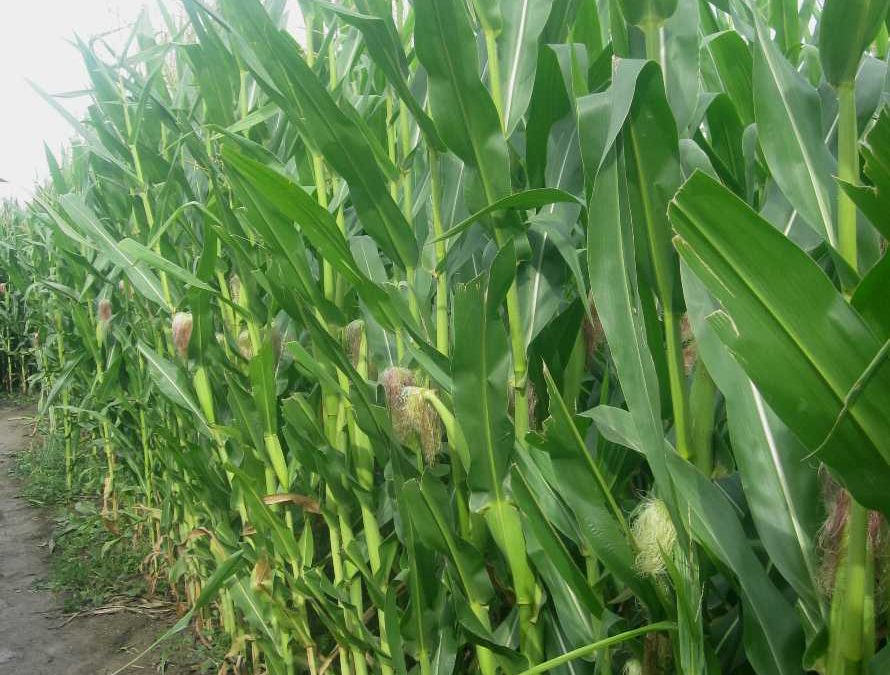In this time of unending COVID and election stories, I ache for a sense of normalcy and certainty. Turning to comfort food satiates and satisfies. Creating a giant pot of minestrone soup with the last morsels of summer produce blended with the August canned tomato puree, frost-nipped chard and fall harvested carrots fills the belly and soothes the soul. Summer produce are my favorites as they burst with sweetness, flavor, and juice. At the end of October local farmers’ produce bins still brim with zucchinis, peppers, tomatoes, and corn until either the first frost or the ever decreasing hours of daily sunlight no longer ripen the produce. Then the season of hard squashes and root vegetables descends arriving in full force. Now more than a month beyond the end of summer, I’m still savoring the last niblets of my favorite summer vegetable–Sweet Corn.
Sweet Corn Cravings
Every August, I wait with anticipation for the first corn on the cob sighting at the Farmers’ Market. My family begrudgingly accepts almost three months of daily meals with sweet corn as the vegetable, the salad, the starch, the appetizer. I savor the delectable yellow or white or sometimes yellow and white nuggets of sweet and savory mixture of goodness. Standard steamed corn on the cob is my go to starch during peak summer harvest time. Leftover corn is cut off the cob and mixed in soups, creates a corn salad or gets popped in the freezer for delectable eating in the dead of winter. Eastern Washington’s Alvarez Organic Farms never fails to have the first local corn at the market. Western Washington corn arrives in early September with two of my favorites Pierce County’s Sidhu Farms and Snohomish County’s Garden Treasures Farm. As a kid in Connecticut corn was 12 ears for a dollar. Now I pay a dollar an ear or during the peak of the season perhaps three ears for $2. My go to simple recipe is to lightly steam the cob, slather with butter and grind a bit of fine pepper on top. It screams summer!
As the vestiges of corn season slithers into the rain season it got me to thinking about corn, the most planted crop in the United States at 90 million acres,the same acreage as the state of Montana and more than twice the size of Georgia! That is a lot of corn growing!
Dent Corn
As a west coast city dweller, I was surprised to learn that 99% or just about 89 million acres of corn is field corn and is not edible unless processed or it is processed for inedible uses. Field corn, also known as dent corn, is harvested fully grown and dry with an indentation in the top of the kernel as though the cob is sucking its skin into its core. With so little moisture in each kernel, field corn tastes lousy and if eaten would require a dentist’s visit to repair broken teeth. In contrast, sweet corn is harvested and eaten when it is immature such that each bite explodes with its sweet and savory juice.

The 89 million acres of field corn are processed into a myriad of products and uses. Just over 32 million acres of corn, is used as animal feed for cattle, horses, pigs and poultry. Non-meat eaters advocate for growing edible human food on the 32 million acres, a little smaller than the size of the state of Louisiana. As you can imagine multiple books, essays, podcasts and TV commentaries have pontificated on the desire to reduce the U.S. population’s meat consumption and to encourage a plant-based protein diet instead. Knowing how much farmland acreage is used to grow animal feed does give pause for thought.
Thirty-six million acres of farmland acres grows corn for ethanol production. On my first east to west cross country road trip in the back of a Volkswagen bus as a 15-year old, I experienced the five and a half hour interstate highway drive across Iowa’s corn swaying miles. Coincidently Iowa is about 36 million acres, the same number of U.S. ethanol corn production acres! Most commercially sold U.S. gasoline is 10% ethanol, which our 1970 Volkswagen bus did not use. Ethanol produces less energy per gallon than gasoline, but gives the gasoline higher octane. Whether using corn acreage for ethanol production also gives cause for thought. Besides being used as a gasoline additive, ethanol is distilled and used to protect and preserve biological specimens in the laboratory.
How does the remaining dent corn crop get used? It’s a solvent, flavor enhancer, disinfectant, starch, alcoholic beverage, sweetener–fructose, dextrose, corn syrup and corn sweeteners, and shipped through the export market.
Celebrate Corn!
The remaining one percent of the U.S. corn grown production is sweet corn–canned corn and corn on the cob–plus small acreages of popcorn, blue corn, white corn, red corn and ornamental corns all grown on just under one million acres about the same size as Western Washington. Red, white and blue corn show up at the grocery store as specialty tortilla chips!
Watching election night returns requires comfort food. Perhaps some red, white, and blue corn tortilla chips with guacamole and a giant pot of corn and crab chowder simmering on the stove? Or should it be minestrone? Divine comfort food with the last vestiges of summer produce is a necessity to satisfy!

